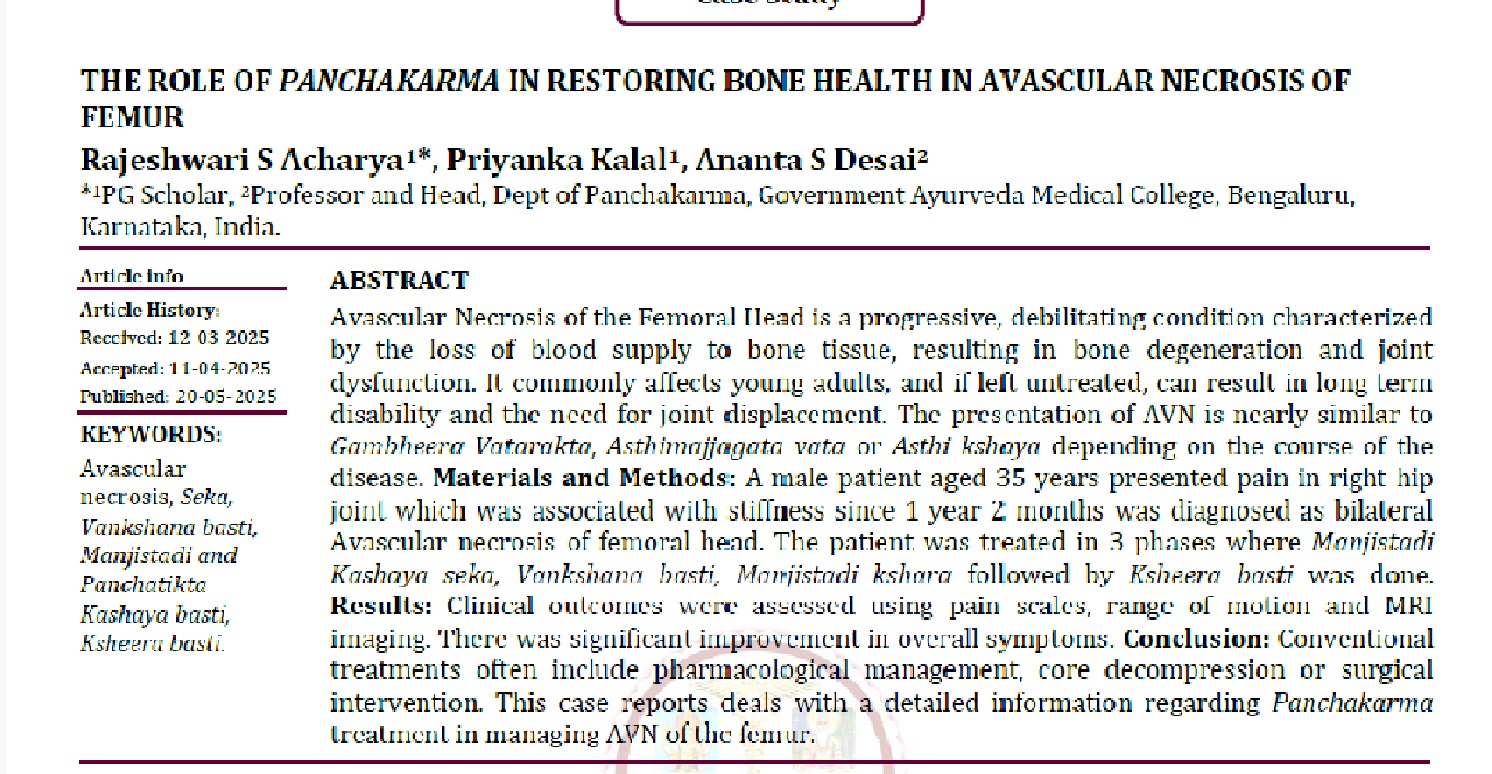Dravyaguna in Ayurveda: A Review of Therapeutic Potentials and Pharmacological Evidence
DOI:
https://doi.org/10.47070/ayushdhara.v12i2.1992Keywords:
Dravyaguna, Ayurveda, Herbal medicine, Pharmacological validation, Therapeutic potential, Rasa, Guna, Virya, Vipaka, Prabhava, evidence-based Ayurveda.Abstract
Dravyaguna is a key area of Ayurveda that offers an in-depth insight into medicinal substances, focusing on their natural characteristics, therapeutic uses, and pharmacological effects. It categorizes these substances according to Rasa (taste), Guna (qualities), Virya (potency), Vipaka (post-digestive effect), and Prabhava (specific action), which together shape their therapeutic value. Ayurveda promotes a holistic healing framework, where the interplay of these elements plays a crucial role in managing diseases and enhancing overall well-being. This review investigates the therapeutic capabilities of various Ayurvedic herbs and examines their pharmacological validation through modern scientific investigation. Numerous medicinal plants traditionally utilized in Ayurveda have been analyzed for their pharmacological properties, such as anti-inflammatory, analgesic, antimicrobial, antioxidant, adaptogenic, and immunomodulatory effects. In addition, Haridra (Curcuma longa) has been widely studied for its anti-inflammatory, wound-healing, and anticancer properties. Nonetheless, despite the expanding body of scientific evidence backing Ayurvedic concepts, there are ongoing challenges related to standardization, dose optimization, and clinical validation of these herbs. The fusion of traditional Ayurvedic knowledge with modern pharmacological research could facilitate evidence-based practices, thereby ensuring the safety, effectiveness, and quality of herbal treatments. Future studies should prioritize comprehensive clinical trials, exploration of molecular mechanisms of action, and pharmacokinetic analysis of Ayurvedic formulations to enhance their acceptance on a global scale. This review seeks to connect traditional Ayurvedic knowledge with current scientific validation, highlighting the importance of interdisciplinary research in the field of herbal pharmacology.
Downloads

Downloads
Published
Issue
Section
License
Copyright (c) 2025 AYUSHDHARA

This work is licensed under a Creative Commons Attribution-NonCommercial-ShareAlike 4.0 International License.


